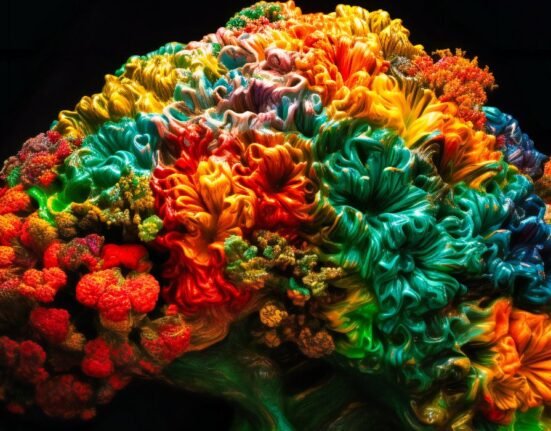Imagine you worked hard in your role at the office. You know for sure you will get promoted this time. But, then you find that a less deserving colleague has gotten that promotion, with a high percentage appraisal. How would you feel? Your heart races, your blood pressure rises and your face flushes red. Anger.. Is it a healthy emotion? Let’s find out.
Read More: The 5 Anger Languages in Relationship
The meaning
The American Psychological Association defines anger as, “An emotion characterized by tension and hostility arising from frustration, real or imagined injury by another, or perceived injustice.” Anger is a normal human emotion that manifests in dynamic expressions and intensities. It can be expressed verbally or nonverbally. It varies in intensity from slight annoyance to severe fury. Anger is part of the flight-fight response to a perceived threat, rooted in the evolutionary (early human) need to fight for survival. It is considered a healthy emotion as it helps assert our needs and protect us from danger. However, harmful expressions of anger can be detrimental to one’s well-being.
Read More: 9 Healthy Ways to Channel Anger and Find Inner Peace
Causes and Expression
Anger can be the result of both internal and external triggers. Internal triggers may include one’s personality and temperament. For example, one can get angry if they get teased about a personal sensitive topic. External triggers may include unmet expectations or perceived threats. For example, one can get angry if others don’t work in the way they expect them to. Traumatic memories can also instil anger. Anger can be manifested in multiple ways. The most common and instinctive expression of anger is an aggressive response.
Read More: Noise: A disturbing movie about Displaced Anger
Anger vs Aggression
Often Anger and aggression are used interchangeably. However, it is important to know the difference between anger and aggression.
- Anger is a natural emotion whereas aggression is a harmful behavior.
- Anger is an internal feeling and aggressiveness is an external reaction.
- Anger is important for survival and challenging situations but aggression is adverse for personal and social well-being.
- Feelings of anger may not always lead to aggressive behavior contrarily, aggression mostly stems from anger.
Anger: What Happens Behind The Scene
When a person perceives a potential trigger to anger, it sets off a series of responses in the body.
The Brain’s Response
The Amygdala (the emotion centre of the brain) is turned on, releasing hormones to prepare us to fight against the threat. There is a Decrease in hippocampus activity, impairing short-term memory. This is why one doesn’t remember what they say or see when in rage. The blood flow to the prefrontal cortex (the rationality centre of the brain) is lowered, thus increasing impulsivity & decreasing decisiveness. The blood flow to the visual & auditory processing brain region increases allowing one to act instantly without thinking much.
Read More: 8 Tips to Control Anger in Children
The Body’s Response
When someone turns angry, their physiological response is prominently displayed through their facial expression. The face often turns red as blood rushes to the skin, accompanied by a clenching jaw and narrowed eyebrows that convey intensity and aggression. Nostrils flare out as part of the body’s preparation for a potential physical confrontation. Internally, blood pressure spikes and the heartbeat quickens, delivering more oxygen and nutrients to the muscles. Simultaneously, digestive functions shut down, and glucose is pushed into the bloodstream, providing a surge of instant energy for a fight-or-flight response.
While these responses occur naturally in humans while triggered, not all people respond with the same type of anger. As mentioned, anger is exhibited in many different ways let’s delve into the various types of anger.
Anger: Types with Examples
- Assertive Anger: Assertive Anger involves showing the feelings of fury more positively and constructively. It motivates efforts for improvement. For instance, rage over political injustice can lead to a person getting involved in more volunteering activities.
- Behavioural Anger: It is a type of anger where there is more impulsive aggression and physical violence. It is intended to hurt others and is unpredictable. For instance, a computer crashes suddenly, leading to losing all unsaved important work. This might trigger thrashing the mouse or the keyboard impulsively.
- Chronic Anger: Chronic Anger manifests itself as persistent hostility and roots from unresolved past resentments. For instance, a person has a strained relationship with a sibling with whom they might have a long-standing resentment.
- Judgmental Anger: Judgmental Anger is expressed as criticizing someone for behaviours conflicting with one’s values. It comes from a core belief that one is either superior or inferior to others. For example, a person may be furious with a colleague for not doing the work as per the way they instructed.
- Overwhelmed Anger: Overwhelmed Anger appears when the triggers surpass the coping mechanism and finally go out of control. For instance, snapping at a friend who has asked for another favour in an already busy work week.
- Passive- Aggressive Anger: Passive- Aggressive Anger is manifested in subtle indirect ways like sarcasm, procrastination, etc while repressing or denying the true feelings of anger. For example, a person reluctantly agrees to cook dinner for their friends and intentionally burns the food as a way to show their frustration instead of expressing the denial directly.
- Retaliatory Anger: Retaliatory Anger is the immediate instinctive response to being attacked or wronged. It seeks justice and sometimes can become vengeance. For instance, bad-mouthing about a coworker who took credit for one’s work as a means of regaining justice.
- Self-inflicted Anger: Self-inflicted Anger is shame-based anger directed inward that shows up as guilt, self-blame, or self-harming behaviour. For example, negative self-talk after not getting selected in an interview.
- Verbal Anger: Verbal Anger may be expressed as intense blaming, threatening or loud shouting, intended to abuse someone else. For instance, a driver may spank another rider for suddenly cutting off in traffic.
- Volatile Anger: Volatile anger explodes as sudden, intense outbursts that stem from poor impulse or stress management. For example, a teacher may yell at a student for a very small mistake due to already built-up personal stress.
Now that we know the various types of anger, let us Come back to the initial question we started this article with, “Is anger a healthy emotion?” Well, it all depends on how one expresses and channels it. Rightly channelled anger can lead to improvements. While expressing anger as a harmful behaviour can be detrimental. It all depends on how well anger is managed!
References +
- Anger Rage, Aggression, Psychology Today (https://www.psychologytoday.com/us/basics/anger)
- Yuliya Richard et al (2022). A systematic review of neural, cognitive, and clinical studies of anger and aggression (https://link.springer.com/article/10.1007/s12144-022-03143-6)
- Paola Manfredi & Claudia Taglietti (2022). A psychodynamic contribution to the understanding of anger – The importance of diagnosis before treatment (https://www.ncbi.nlm.nih.gov/pmc/articles/PMC9422318/)
- Carlos Todd (2024). The Difference Between Anger And Aggression (https://masteringanger.com/blog/difference-between-anger-and-aggression/)
- Understanding the Behavior of Anger (https://www.universalclass.com/articles/psychology/anger-management/understanding-the-behavior-of-anger.htm#:~:text=There%20is%20a%20psychological%20response,your%20anger%2C%20or%20calm%20yourself)
- How Anger Affects Your Brain and Body (https://neuropedia.com/anger-brain-body/)
- 10 Types of Anger: What’s Your Anger Style? (https://lifesupportscounselling.com.au/resources/blogs/10-types-of-anger-what-s-your-anger-style/)













Leave feedback about this